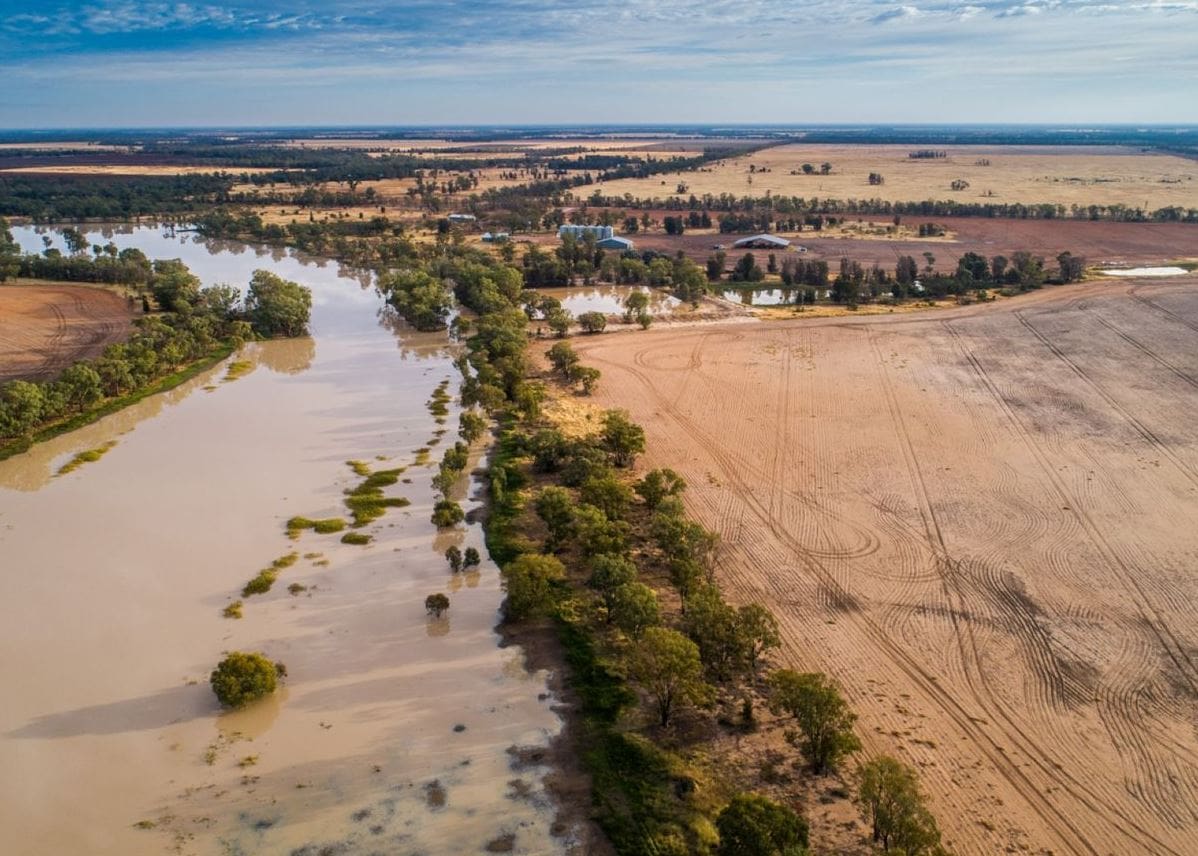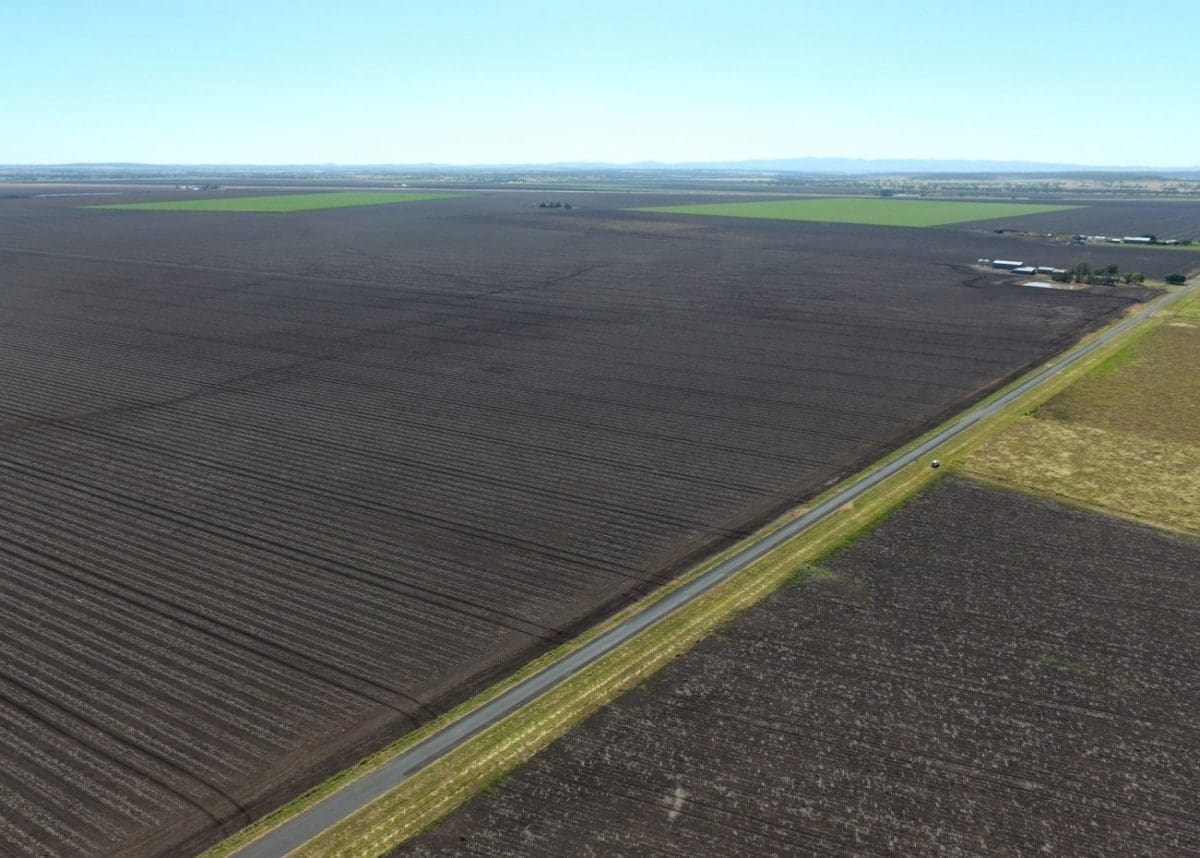
Mt Pleasant at Hannaford will be auctioned on 2 July. Photo: Colliers
VALUES for cropping country on the outer Western Downs of southern Queensland are set to be tested when Mount Pleasant at Hannaford goes under the hammer next Thursday.
Mount Pleasant covers 1905 hectares, including 1590ha of dryland farming country.
It is located 18 kilometres north-east of Meandarra, and is being offered for sale by Peter Lavrijsen, who previously lived in New Zealand.
Colliers International agent Phillip Kelly at Dalby is handling the sale, and said the outer Downs’ ability to produce grain, even in tough years, has ramped up its value.
“With modern farming practices, they can grow a crop with below-average rainfall, and one of the drivers is the value proposition,” Mr Kelly said.
“If you compare Inner Downs dryland country at $5000 an acre ($12,350/ha) with that Condamine country, that’s good value.”
Mr Kelly said the outer Western Downs saw its big lift in values 15-16 years ago.
“That’s when the developers were picking up lower-value grazing country.”
Feedgrain in demand
The Western Downs is home to around two-thirds of Australia’s beef feedlot capacity.
Mr Kelly said this put a floor in the region’s grain market for properties like Mount Pleasant.
“There’s a micro economy for grain from Roma to Toowoomba because of those feedlots, and also piggery and poultry demand, plus the ethanol plant in Dalby.
“The other thing out there is the opportunity for scale.”
High-value grazing country such as Dunkery is now selling for a benchmark price of $2700/ha, ahead of average grazing country at up $2200/ha, and premium outer Western Downs cropping country has been nudging $3700/ha.
While soldier-settler blocks of up to 500ha generally sell privately to neighbours, Mr Kelly said larger holdings were attracting interest from investment companies and expanding family farming operations.
“Large investment companies are still very active.
“I’m getting inquiry on Mount Pleasant from corporates and locals, and from people out to Roma and Taroom and into the Inner Downs.
“There’s a recognition that there’s a limited supply of this kind of country, and if you’re a grain producer who wants a winter and a summer cropping option, this is good value.”
Mount Pleasant comprises mostly of brigalow and belah country with grey brown clay soils, with some box country and redder soils adjacent to Horse Creek, which dissects the property’s north-eastern corner.
Improvements on Mount Pleasant include a cottage, modern main house, workshop, two machinery sheds, stockyards, six dams, vertical grain storage and exclusion perimeter fencing.
Heavy country in demand
Renowned heavy soils found on the Jimbour Plain and pockets east of the Condamine River River can see dryland croping country fetch more than $12,000/ha.
The recent local-to-local sale of the 377ha Oban at Jimbour, which Fitzsimmons Real Estate director Michael Fitzsimmons said has set a new record of $12,474/ha, or $5050/acre, is a case in point.
Mr Fitzsimmons said this was up around 10 per cent on the previous Jimbour Plain record set 12-18 months ago.
“There’s a limited amount of this country around, and it’s generally keenly chased, and that’s why we push auction as the best way to sell it.”
Oban’s new owner planted a crop last week following rain earlier this month.
“Oban was a bit special because it had a chickpea crop in 2018 which got hailed out, and nothing has been planted since, so there was fertiliser in the ground and the country was ready to go.
“Rain the other day wet the topsoil to add to that subsoil moisture from rain in January.”

Oban at Jimbour sold at auction for more than $12,000/ha. Photo: Fitzsimmons Real Estate
Jimbour has an annual average rainfall of more than 625 millimetres, while outer Western Downs farms in districts like Condamine, Hannaford and Meandarra have more like 575mm, and lighter soils.
This lower clay content has enabled growers in the lower-rainfall area to plant crops when some in heavier country would not risk planting on limited or negligible topsoil moisture for fear of a failed germination.
Some country in the outer Western Downs has only come into cropping from grazing in recent years, and therefore required fewer inputs than country which has been cropped for decades.
Grain Central: Get our free daily cropping news straight to your inbox – Click here



HAVE YOUR SAY